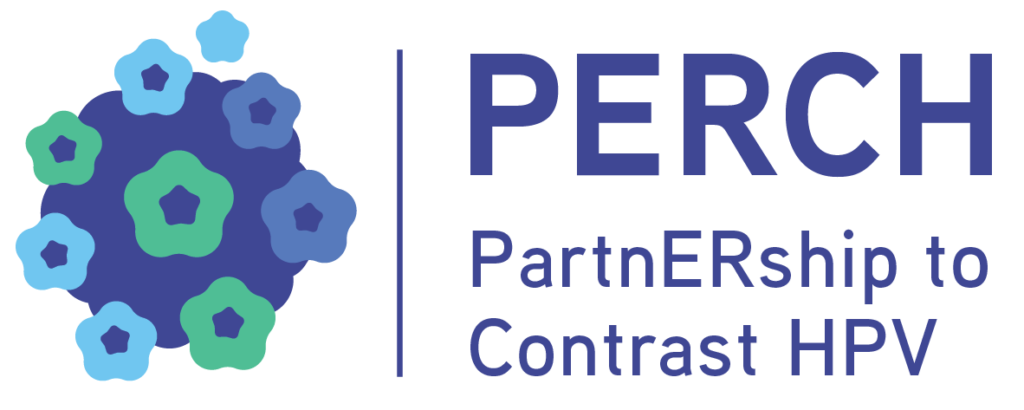
PERCH at EUROGIN 2025: To Improve HPV Vaccination Coverage Across Europe
At the EUROGIN 2025 conference in Porto on March 18th, Assist. Prof. Urška Ivanuš, MD, PhD, and lead of Work Package 2 (WP2), presented the latest developments from Project PERCH in the field of HPV communication. Her presentation, titled “Actions to Improve HPV Vaccination in Europe: How to Bring the Message to the Public?”, highlighted how strategic communication can support higher HPV vaccination coverage across the EU.
Although HPV vaccination is highly effective, safe, and widely available—funded by national health systems in almost all EU countries (ECDC Vaccine Scheduler)—significant disparities in coverage remain between countries. To address this challenge, the Joint Action PERCH unites 18 EU Member States, each represented by institutions officially nominated by national health ministries. Within WP2, more than 80 national experts in HPV and communication form the “HPV Vaccination Guild”—a unique European network working together to strengthen communication and improve HPV vaccine confidence and acceptance.
Key Highlights from the Presentation:
HPV vaccination actions (WP4):
12 EU countries launched national HPV vaccination actions using innovative campaigns and local strategies. Belgium held a stakeholder workshop for linkage of individual data on HPV vaccination with cancer registry data. Estonia implemented a three-step campaign including leaflets, social media, and a GP helpline. France introduced a school-based vaccination campaign using multi-channel communications. Germany focused on parent-friendly online environments and interactive engagement. Greece combined education of healthcare professionals with a social media campaign. Hungary ran a national campaign with school activities and professional training. Italy piloted school-based campaigns featuring a rap song, while Lithuania developed a real-time vaccination dashboard. Poland targeted Polish parents and Ukrainian refugees through social media and national campaign updates. Slovakia established a national HPV coalition for unified messaging to children, parents, teachers, and GPs. Slovenia launched the “Deadly Serious about HPV” campaign with a booklet by youth author Desa Muck, and Spain hosted a workshop on communication tools for vaccination crises.
Tackling Vaccine Hesitancy (WP6):
Under Work Package 6 (WP6), 13 countries conducted national assessments of HPV vaccine hesitancy through literature reviews, parent surveys, and school-based focus groups. To increase uptake of the HPV vaccine, PERCH WP6 recommends providing clear and continuous, evidence-based communication to all target groups, including healthcare professionals; engaging parents—especially mothers—in discussions with physicians about the benefits of vaccination; partnering with schools to raise awareness and provide health education to parents and pupils, including distribution of information leaflets; and implementing school-based HPV vaccination programmes, even if initial resistance is expected, to improve coverage and reduce social inequalities. The findings emphasize the importance of clear, empathetic, and evidence-based messaging, particularly focused on mothers and school communities.

Training Health Professionals (WP7):
11 countries trained over 17,500 health professionals using a shared communication curriculum. These trainings help healthcare workers confidently address concerns and communicate HPV vaccine benefits effectively.
Developing National Strategies (WP2):
7 countries are developing national HPV communication strategies using the PERCH HPV Communication Guide, toolkits, and a shared peer-support approach. These strategies will help ensure sustainability and consistency in messaging across Europe.
PERCH is a powerful example of how collaboration, evidence-based communication, and shared tools can accelerate progress toward the WHO goal of eliminating cervical cancer.


